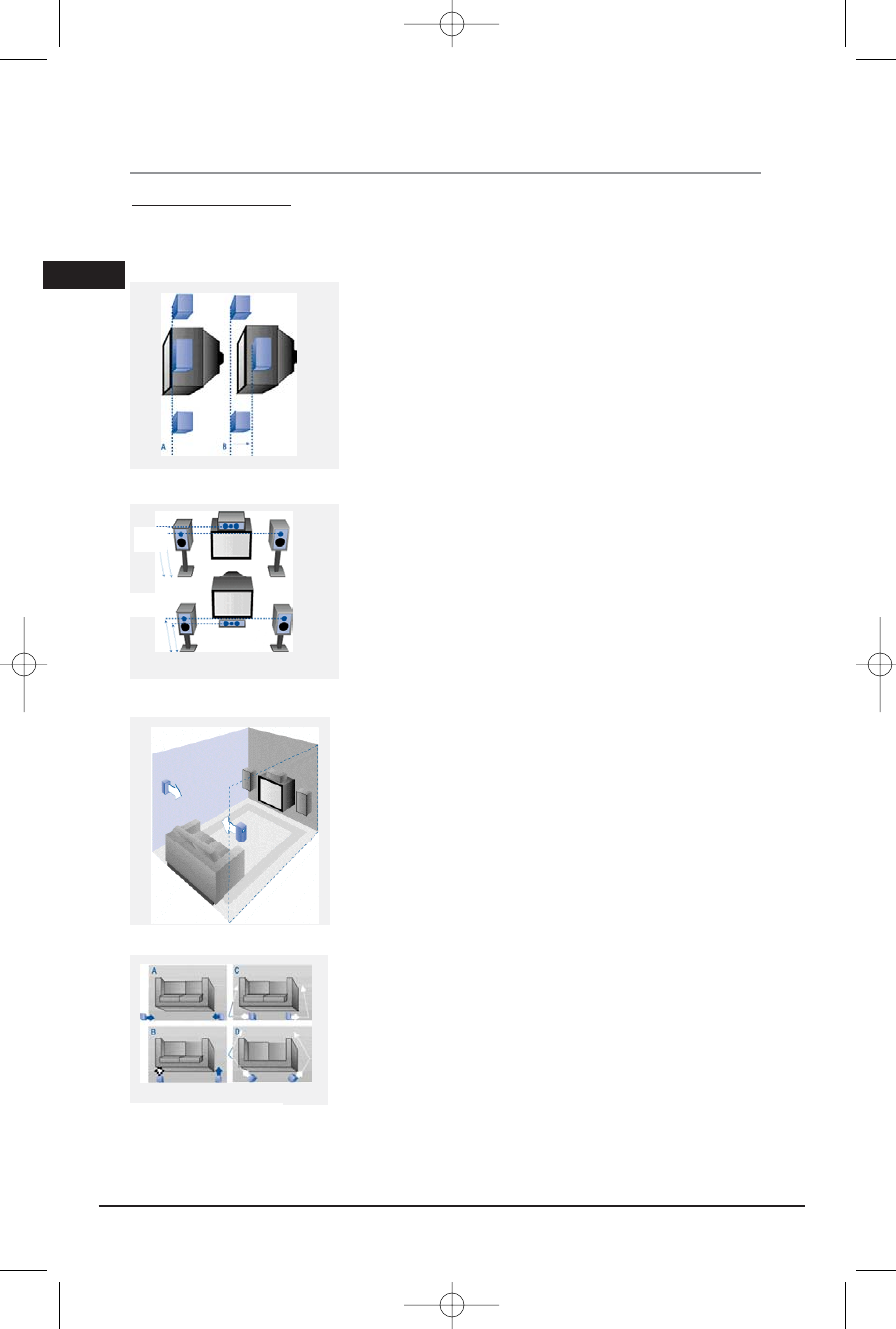
Illustrations contained in this document are for representation only.
Front speaker placement
Follow the suggestions for speaker placement below to
get the best results.
Alignment
Align the center speaker evenly with (A) or slightly
behind (B) (the left and right speakers), but not ahead
of them.
Angle
Place the left and right speakers to form a 45-degree
angle with your favorite viewing position to duplicate
the soundtrack mixer’s perspective.
Height
The mid- and high-frequency drivers of the three front
speakers should be as close as possible to the same
height. This often requires placing the center speaker
directly on top (A) or beneath (B) the TV set.
Preferred surround placement
Location
If possible, place surround speakers to either side of the
listening area, not behind it.
Height
If space permits, install surround speakers 2-3 feet above
viewers. This helps to minimize localization effects.
Aiming
Aim surround speakers straight across the room, not
down at viewers, to help create a more open, spacious
surround sound field.
Alternative Surround Placement
Rear wall
If rear wall mounting is the only choice, aim the
speakers at each other (A), towards the front (B) or
towards the sidewalls (C, D). Experiment with placement
until sounds seem to surround you, rather than come
from behind you.
Connections and Setup
Magnetic shielding
Speakers placed less than two feet from the TV set must be magnetically shielded in order to
prevent picture distortion. Front and center speakers provided with this unit are magnetically
shielded to protect your TV set.
Note: It is not recommended to place the rear speakers and subwoofer near the TV set.
Courtesy Dolby Laboratories
Courtesy Dolby Laboratories
6
A
B
Courtesy Dolby Laboratories
Courtesy Dolby Laboratories
EN
RTD209 EN 26/4/06 3:21 PM Page 10


















